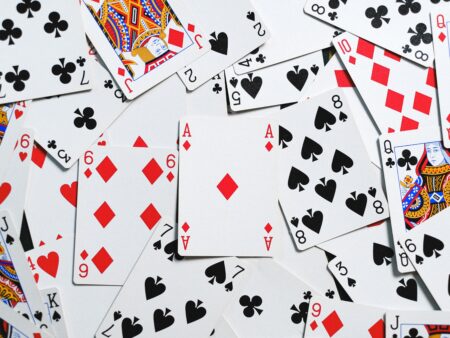Description of playing styles
Experienced players perfectly know that your opponent determines a lot in poker. If you could discover your opponent’s playing habits, get inside his brain and read his mind, your chances of winning would rise dramatically.
It is important that you are familiar with the most common types of poker players. The principal division is concerned with the cards they decide to use to play. Tight players only use the best hands (high pairs, AK, AQ), while loose players enter the game with a broad range of cards (low pairs, low connectors) and count on a flop and expect to win with a weak hand, which opponents do not assume.
Aside from selecting cards, there is also activity in the bid that matters. Aggressive players raise high, often in order to scare opponents, while passive players do not take much risk even though they have a strong card and let opponents become active, which may also be a trap.
It is obvious that every single player has its own specific playing style so the above-stated descriptions are only simplified. In combination with in-depth observation of your opponents, they prove to be highly useful. Remember however that only continuous observation of your partners’ behaviors can help you discover their playing style and adapt a successful tactics to their style.
Loose-passive type (always in the pot)
This is the player who has learned that it is possible to win in Texas Hold’em with any cards. Before the flop he almost always contributes to the pot and plays to river after the flop. Such a player tends not to fold and despite low likelihood of winning believes that the last card will help him win. In English such a player is referred to as „calling station” (call means to make a bet, which means that this is the type of player who always makes a contributions when it is his turn). On the other hand this type of a dealer rarely decides to raise the bet. Therefore, instead of ineffectively bluffing, it’s more advisable to wait for a good, strong card and beat such a player through small raises.
Loose-aggressive type (maniac)
Such players are frequently called maniacs and this term is enough to explain the nature of their behavior. The maniac likes to be in every single deal, and also loves to raise stakes, no matter of what cards he has. He adores bluffing, and the number of his chips varies dramatically. He can act in the same way when having a pair of aces (A, A) and a weak hand (e.g. 7,2o). Meeting this kind of an opponent will surely evoke a lot of emotions.
Tight-passive type (rock)
A very careful player whose motto in poker is: „Get two strong cards and win with them”. This player is utterly predictable because he never bluffs. This means that it is not easy to win a lot of his chips because he enters the game only in case of a strong hand. He is also a good „blind donor” as he does not defend his obligatory bets, so you can try to get his blind with a strong raise even though you have an average card.
Tight-aggressive type (shark)
This player does not participate in many deals, but when he decides to contribute to the pot, he takes a total control over the game. He looks for weak steps of his opponents to raise the stake considerably and in effect provokes others to make a mistake. If he bluffs, he does so in a way that you would rather not check his bluff even though you know he is bluffing… This player is extremely dangerous, you’d better avoid him – unless you are such a player!
To finish with, it is essential that we mention that some players deliberately change their playing style and these are always very dangerous opponents. You should pay special attention to these players. Another reason of changing the style of playing may be nervousness arising from a weak card; this is the so-called tilt, that is throwing off balance. Speaking of tilt, the player starts playing very bad, gets nervous due to previous failures.
For more about poker strategies and other issues, go to the website







